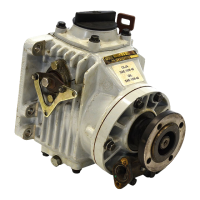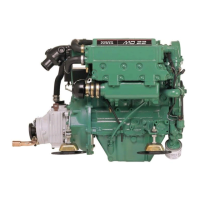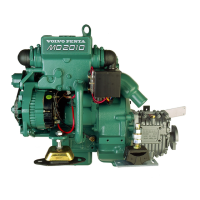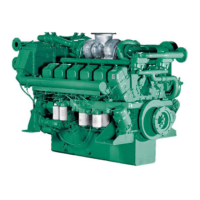SERVICING
REPLACING
THE SEA.WATER
PUMP IMPELLER
The
pump
impeller
is made
of neoprene rubber
and this
can be damaged
in the case
of water
deficiency
caused by, for example,
blocking
of the
sea-water inlet. The
pump
impeller is changed
as
fol
lows:
1.
Close the
bottom cock.
Remove the
cover
from
the
sea-water
pump.
Note the
risk
of water
getting
into
the boat.
With the
help of two
screwdrivers
pullthe
shaft
with the
pump
impeller
out of the
housing as far
as
necessary
in
order
to
reach the
bolt
retaining
the impeller.
See Fig
21.
NOTE. Place
some
kind
of
protection
under the
screwdrivers in order
not to damage
the impeller
housing.
2.
Pull
the impeller off
the shaft. Clean the inside
of the
pump
housing
and
fit
the
new impeller.
3. Fit the cover
with its original
gasket
which has the right
thickness. Always
have
a
spare impeller on board.
Open the bottom
cock.
Fig.21
.
Removing
impeller.
Arrow
points
to impeller
lock bolt
16.
Electrical
system
CHECKING THE
STATE OF CHARGE
OF THE BATTERY
The
state of charge of
the battery
should be checked at least once each
season.
This
is done by using a
hydrometer which
shows the specific
gravity
of the electrolyte,
this varying
with the state of charge.
(See
under
"Technical
Data".)
CABLES AND CABLE TERMINALS
At regular
intervals check that all
cable terminals are
properly
tightened and that
none
of the
cables
is
damaged.
STARTE
R-GENERATOR
All work on the
starter-generator
(and
alternator
lf
fitted)
should be carried out by
an authorized
service
workshop.
lnspection and control
should be done when the
engine
is
given
a
qeneral
overhaul.
20
SERVICING
NOTE. This is
particularly
important when
the engine is
fitted with an alternator.
The battery
poles
and
cable clamps should be
well tightened and smeared
with
grease
or
vaseline.
WARNING!
lf the alternator
and its regulator are
to
function
perfectly,
it is extremely
important
that the
following instructions
are followed:
1.
Never break
the circuit between
the alternator and
battery
while the engine
is
running. The
result will be a short-circuit
in the
regulatorwhich
is immediately
ru ined.
The master switch
must never
be switched
off before
the engine
has completely
stopped.
2.
Never confuse
the battery
poles
with
one another.
The
poles
are
generally
stamped
with a
plus
and a
minus sign
respectively.
The minus
pole
must always
be
earthed to
the engine block.
3.
Use only
Volvo
Penta double
diode
kits when charging
two
batteries
from one
generator.
4.
ln the case
of
starting
by
using a spare
battery,
this should
be done
as
follows:
Let
the
ordinary battery
remain
connected
in circuit.
Connect
the
spare
battery
to the
ordinary battery,
plus
to
plus
and
minus to
minus. When
the
englne starts
disconnect
the spare
battery
but never
break
the circuit to
the
ordinary batlery.
Never use a
rapid charger while
the alternator
is connected
to
the battery.
Always disconnect
both
battery
cables before
carrying
out any
work on
the
alternator
equipment.
7. lf
electric
welding work
is to be carried
out
on the engine
or installation units,
disconnect
the charging
regulator
cables at
the alternator
and insulate.
8.
Check
vee-belt tension and
cable
connections at
regular intervals.
17.
Ghecking
the
reverse
gear
and
reduction
gear
The
reverse
gear
and
reduction
gear
should be
checked regularly
for
oil leakage,
abnormal
noise or excessive
operatinq temperature.
When
remote
control
is connected,
it must be so designed
that there
is
no
constant
pressure
on the control
components
of the reverse
gear.
When
reverse
gear
is
enga-
ged
for
"Forward"
or
"Reverse",
the
remote
control should be
completely off-
loaded.
Adjust if
necessary by loosening
the lock
nut
and turning
the cable
"dice".
5.
6.
21
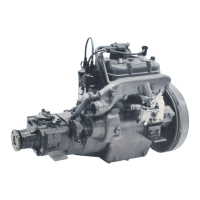
